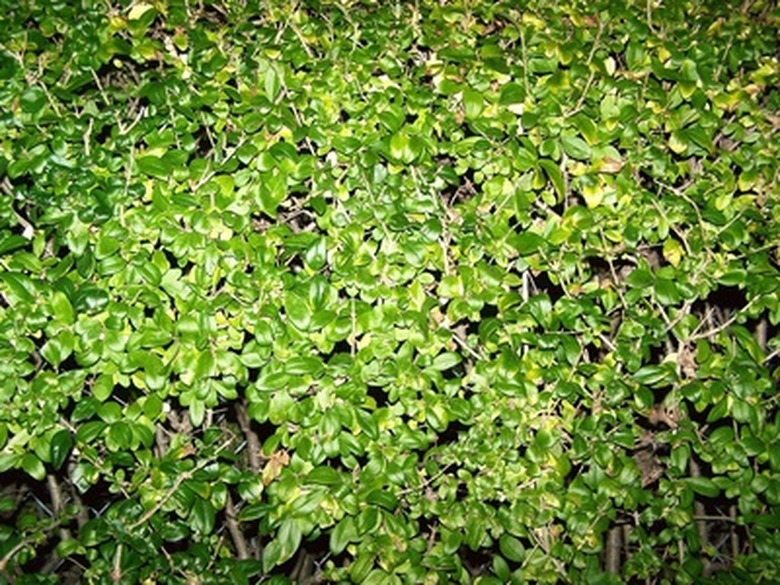How To Propagate Privet Hedge Cuttings
Things Needed
- Shovel
- Compost
- Knife
- Rooting hormone
- Water
Left untrimmed, privet shrubs may grow as tall as 18 feet and they can reach almost 25 feet in width. Commonly used in mass plantings for hedges, privet shrubs maintain a uniform shape with regular pruning. Privets grow rapidly in suitable conditions and tolerate occasional neglect. These quick-growing shrubs reproduce through seed formation in nature. They also grow easily from vegetative cuttings taken from the parent specimen. Vegetative cuttings closely replicate the growth habits and characteristics displayed by the parent shrub.
Step 1
Prepare the soil in your selected planting site before removing your cuttings for propagation. Privet shrubs tolerate many types of soils, but prefer well-drained compositions. Place these in areas that receive plenty of sunshine throughout the day. Loosen the top 8 to 10 inches of soil with a garden shovel. Mix in some compost to loosen heavy soils or soils with plenty of clay. Break up any clumps and remove weeds and debris from the area.
- Left untrimmed, privet shrubs may grow as tall as 18 feet and they can reach almost 25 feet in width.
- Privet shrubs tolerate many types of soils, but prefer well-drained compositions.
Step 2
Select a healthy privet specimen for your hedge cuttings in the late winter or early spring. Remove these cuttings before they start forming new leaves in the spring. Use cuttings between 4 and 30 inches for rooting new shrubs. Include at least two nodes on each of your cuttings. These nodes are small bumps on the branches left by previous leaves. Use a sharp knife to cut through the stem at an angle just below the bottom node.
Step 3
Remove a 1-inch sliver of the outer bark from opposite sides of the cuttings near the bottom end. This will encourage the cuttings to form new roots along these damaged sections. Dip the bottom couple of inches of your stems into a cup of cool water to dampen the surfaces. Tap lightly on a paper towel to remove excess moisture, and then dip the bottoms into your powdered rooting hormone. The powder will adhere to the damp cuttings.
- Select a healthy privet specimen for your hedge cuttings in the late winter or early spring.
- Remove a 1-inch sliver of the outer bark from opposite sides of the cuttings near the bottom end.
Step 4
Plant your privet hedge cuttings into your prepared soil. Do not allow these cuttings to dry out. Make a guide hole in your loose soil by poking a clean stick into the soil, leaving holes for your cuttings. Insert the powdered bottom of the privet cuttings into the holes. Press the cuttings into the soil to a depth equal to about one-fourth of the entire length of your cuttings. Press the soil around the cutting, holding it firmly in place.
Step 5
Soak the soil around your new privet shrubs immediately after planting them. Keep the soil slightly moist while the plants develop new roots. They may take a couple of months to form healthy roots. Watch for leaf buds and new stem growth to signal the success of a healthy cutting taking root beneath the soil.
- Plant your privet hedge cuttings into your prepared soil.
- Make a guide hole in your loose soil by poking a clean stick into the soil, leaving holes for your cuttings.
References
- University of Arizona: Plant Propagation
- Purdue University: New Plants from Cuttings
- "Botanica's Gardening Encyclopedia", Susan Page, 2001
